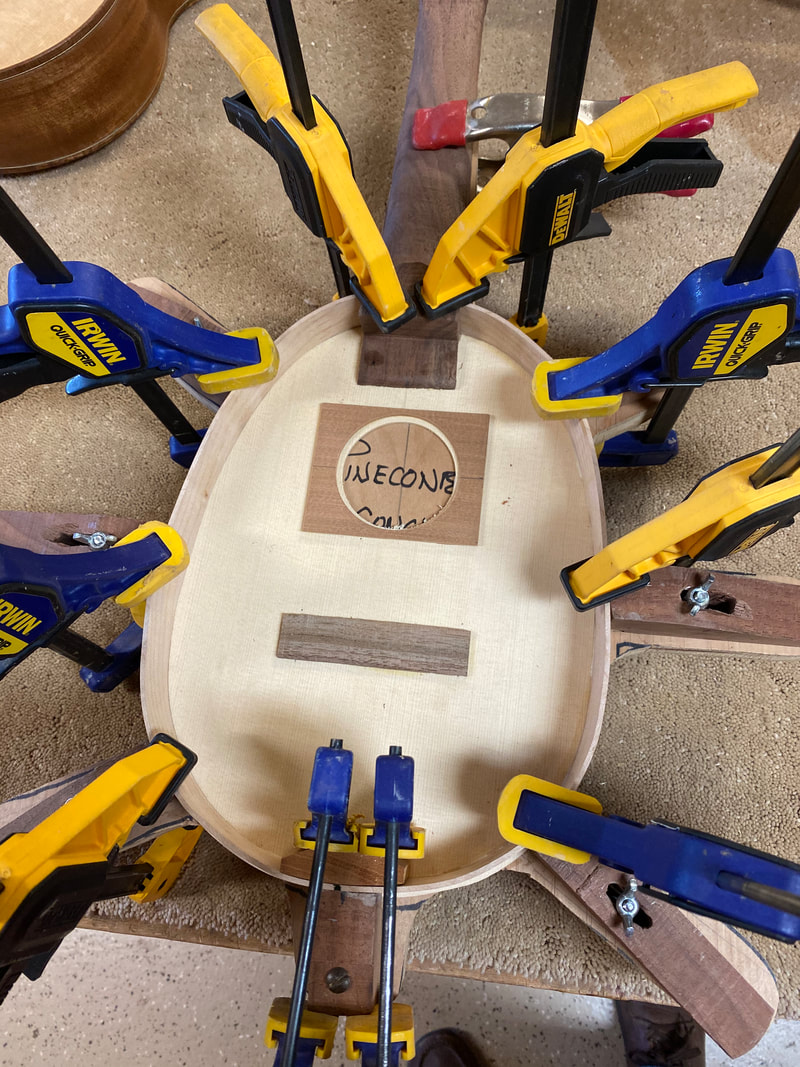My grandson Evan Christie, and I designed the first pinecone perhaps 10 years ago. It is a wonderful instrument in either soprano or concert model. I am currently building two concerts, After making the soundboard of Englemann Spruce it is time to bend the sides.
This is a pretty simple bend as none of the angles are extreme. I clamp it shut as it dries, cools and sets. the neck for these pinecones are shown in this picture. they are walnut from a limb that broke off of a huge walnut tree in the county, The limb was twelve inches thick, the tree, the largest walnut I have ever seen.
| the sides are trimmed to exact length and edge glued to the soundboard held in place by the special assembly jig that will adjust to the smaller soprano size also. the clamps hold it down as the glue sets. | tentalones are put in immediately while in the jig. 'the upper tentalones go in later using these cool little clamps I found at Grizzly Imports awhile ago. |
So far it has been quick and easy- now the work begins. The Pinecone backs are made from a highly figured 3/4 inch slab of Big Leaf Maple. The first step is carving a pleasant round back. This is done the old fashioned way with a very sharp set of rasps. Good upper body exercise, but a fun part of the build. Fairing it all in evenly and with a pleasant angle is the challenge.
Here is the final result. A rounded back with a concave inside that is only a little more than an 8th of an inch thick. It is strong, beautiful and I believe what makes these Pinecones sound so darned good. But how do I hollow them out???
It begins at the drill press where I am hogging out most of the wood with a Forstner bit and the drill press set to stop before penetrating the back, This is the first step. More tomorrow.









